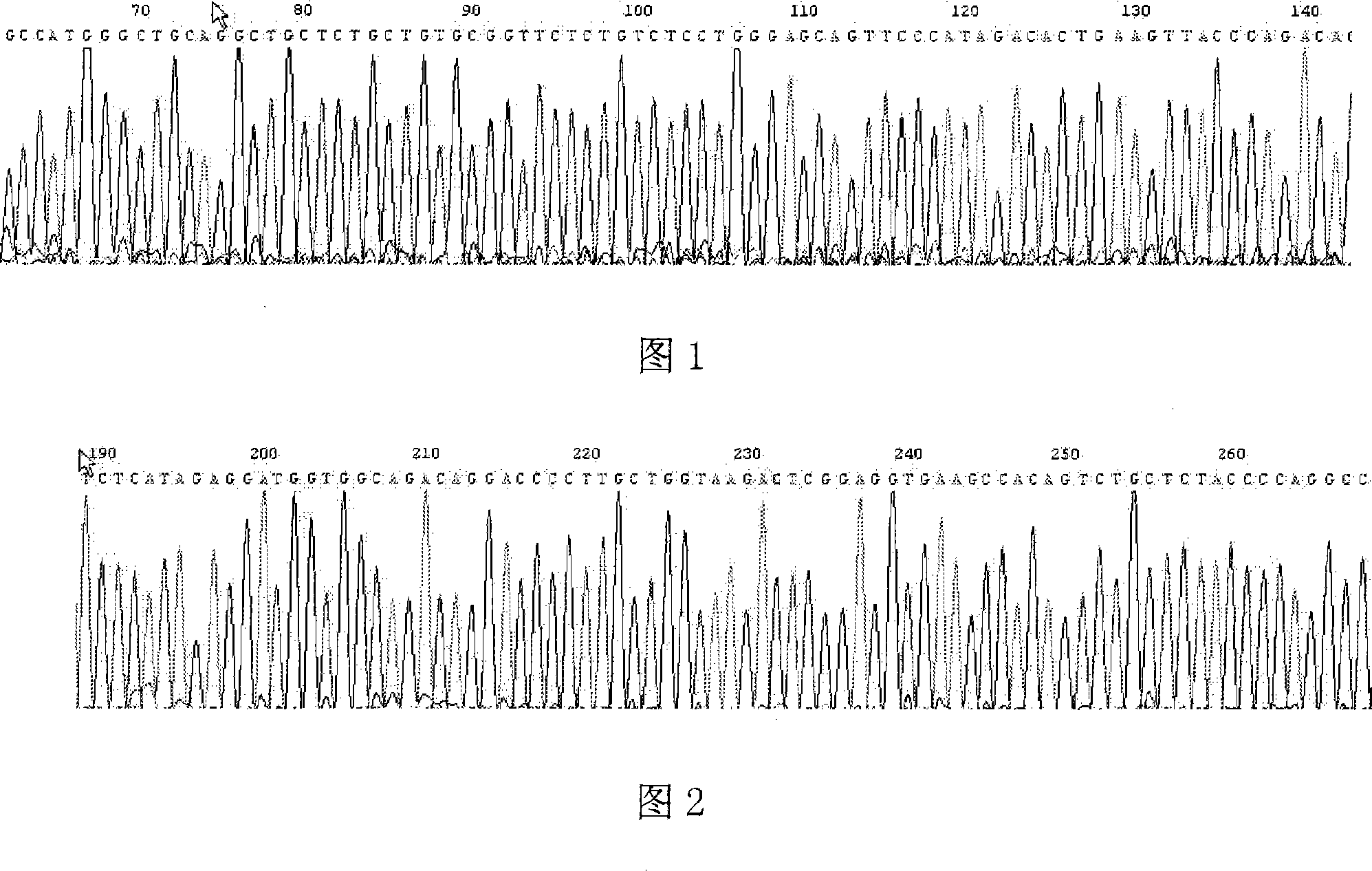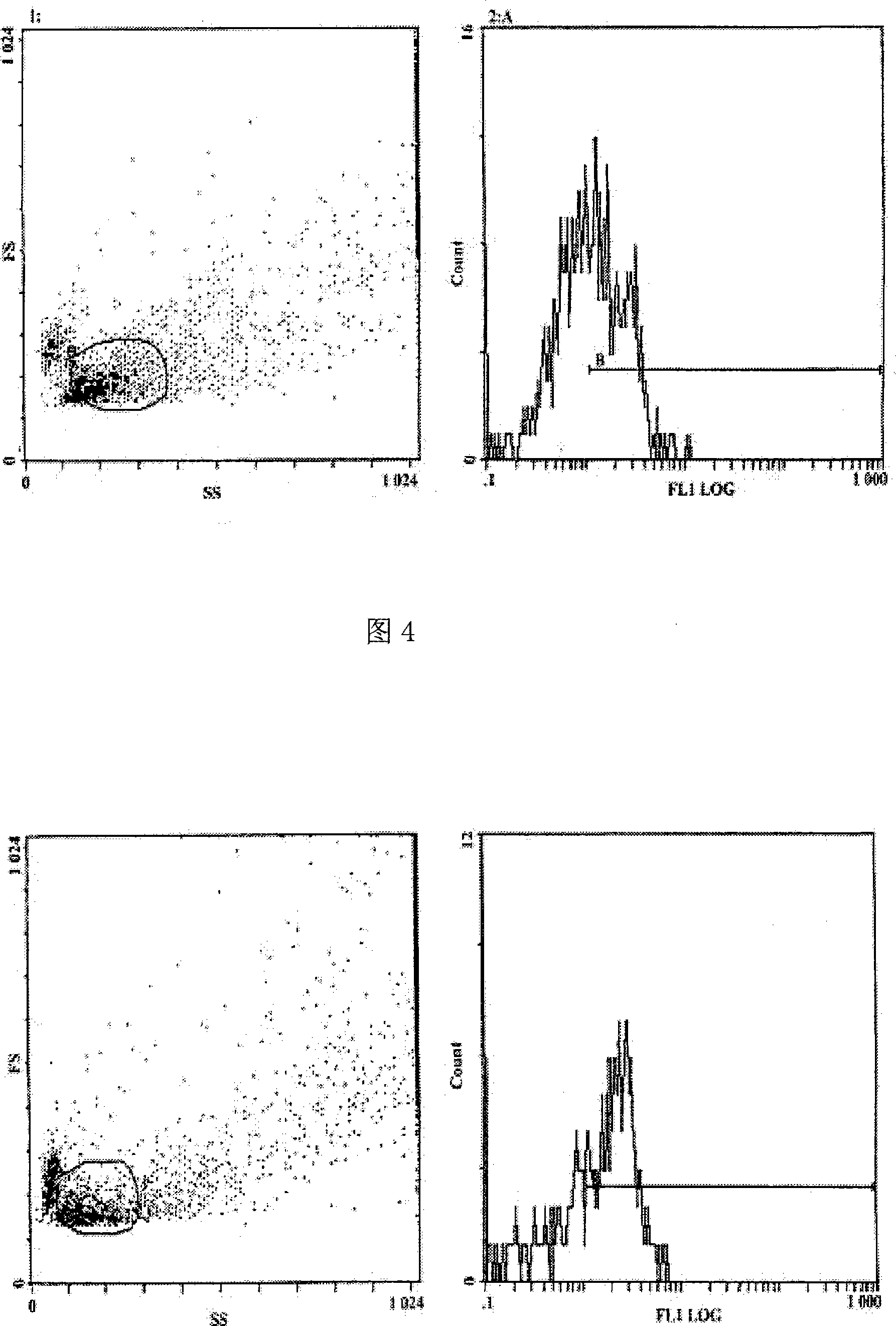Human TCRVbeta7.1_H3F7 gene and its screening method and application
A gene and gene sequence technology, applied in the field of gene sequence
- Summary
- Abstract
- Description
- Claims
- Application Information
AI Technical Summary
Problems solved by technology
Method used
Image
Examples
Embodiment 1
[0079] Example 1: Anti-hepatocarcinoma-specific TCRβ gene was screened using the method of gene dominance
[0080] Peripheral blood mononuclear cells from liver cancer patients and healthy people were collected, respectively co-cultured with liver cancer cells and stimulated to separate T lymphocytes, and then the cells were washed twice with PBS, and the total RNA was extracted according to the method provided by the Invitrogen kit. The reverse transcription kit synthesizes cDNA from the extracted total RNA. The CDR3 primers of 26 family members of the TCRβ gene family were designed and synthesized respectively, and the cDNA reverse-transcribed from the total RNA extracted from the above two kinds of cells was used as a template for PCR amplification reaction. After the amplified products were separated by 1.2% agarose gel electrophoresis, a conservative sequence was selected to design and synthesize a digoxin-labeled probe for Southern hybridization and image development. It...
Embodiment 2
[0081] Embodiment 2: Utilize the PCR method to amplify the complete TCRVβ7.1 gene
[0082] According to the conserved sequence of the TCRVβ7.1 subfamily, design primers for amplifying the coding sequence of the TCRVβ7.1 gene family:
[0083] V7CK: ATT GAATTC+GCC+ATGGGCTGCAGGCTGCTCTGC
[0084] C2CK: GCC AAGCTT+CTAGCCCTCTGGAATCCTTTTCT
[0085] The front ends of the primers all contain three protective base sequences, the V7CK primers contain the sequence of the restriction endonuclease EcoR I, the C2CK primers contain the sequence of the restriction endonuclease HindIII, and the V7CK primers also contain the sequence of Kozark.
[0086] From normal human blood samples, through a series of procedures of lymphocyte separation-lymphocyte RNA extraction-reverse transcription of extracted RNA-PCR amplification, the TCRβ7.1 gene was finally cloned into the expression vector pcDNA-kan.
[0087] The EcoRI and HindIII sites in the multiple cloning site of the pcDNA-kan vector were sele...
Embodiment 3
[0088] Example 3: TCRVβ7.1_H3F7 gene-modified T cells induce apoptosis of liver cancer cells in vitro
[0089] After transfection of T cells with the specific TCRVβ7.1_H3F7 gene that recognizes liver cancer, flow cytometry and laser confocal light microscope detection confirmed the dominant expression of TCRVβ7.1_H3F7 molecules, as shown in Figure 4-Figure 8, left in Figure 6 The picture is the control group, and the right picture is the TCRVβ7.1_H3F7 gene transfection group. The left picture in Figure 7 is a laser confocal microscope diagram of TCRVβ7.1_H3F7 transgenic T cells interacting with liver cancer cells; the right picture is a schematic diagram of computer software analysis, the columnar part is the specific binding between T cells and liver cancer cells, and the other is non- idiosyncratic. The left picture in Figure 8 is the untransfected T cell group, and the right picture is the TCRVβ7.1 gene transfected T cell group. Co-cultured with liver cancer cells, DNA La...
PUM
 Login to View More
Login to View More Abstract
Description
Claims
Application Information
 Login to View More
Login to View More - R&D
- Intellectual Property
- Life Sciences
- Materials
- Tech Scout
- Unparalleled Data Quality
- Higher Quality Content
- 60% Fewer Hallucinations
Browse by: Latest US Patents, China's latest patents, Technical Efficacy Thesaurus, Application Domain, Technology Topic, Popular Technical Reports.
© 2025 PatSnap. All rights reserved.Legal|Privacy policy|Modern Slavery Act Transparency Statement|Sitemap|About US| Contact US: help@patsnap.com



